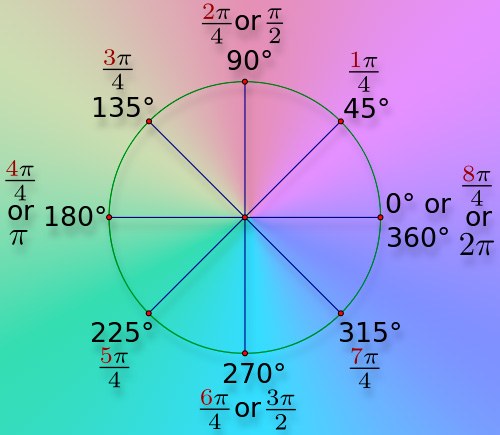Instruction
1
If you need to convert to radians the measure of the angle, measured in degrees, assume that one complete revolution contains 360°, and this value is equivalent to 2*PI radians (this follows from the circumference of a circle of radius one). Divide a known number of degrees on the ratio of 360/(2*π)=180/π to find the number of radians that corresponds to this angle. If enough approximate values, instead of the ratio of 180/π, use number of 57.3.
2
Sometimes the fractional part of the angle, measured in degrees, is expressed in angular minutes and seconds (for example, 27° 15' 42"). Such a designation is used, in particular, in the designation of a geographical and astronomical coordinates. In this case, when resampling, keep in mind that each radian is approximately equal to 57° 17' 45", or 206265".
3
Another one of the available units of measurement of angles is called "turnover". From the name itself it is clear that one revolution corresponds to the angle of 360°, i.e. 2*PI radians. To convert revolutions to radians multiply them by 2*π, or approximately 6.28.
4
In addition to these units for measuring angles can be used grad - one-hundredth of the direct (90°) angle. For conversion to radians, angles in grads multiply the original value by one-two hundredth of the number PI. This number is approximately equal to a decimal 0,016.
5
In navigation still has application measuring angles in the historic old town. Here is a full circle with the zero point corresponding to the direction of the North, is divided into 32 sectors (Rumba). This implies that each Rumba corresponds to the angle 2*π/32=π/16≈0,196 radian - Rumba multiply by this factor when they are recalculated in radians. Keep in mind that each of the 32 compass points has its own name - for example, the Rumba "Nord-OST" (North-East) corresponds to the angle that is approximately equal to 0.79 radians.
6
Artillery used in marking angles in units of division of the protractor. There are big and small division. Small division corresponds to a corner in one six-thousandth share of the total turnover (2*π), so to translate to radians multiply the original value by a factor of 0,001047. A large division of the protractor contains a hundred small, so use the conversion factor 0,1047.


